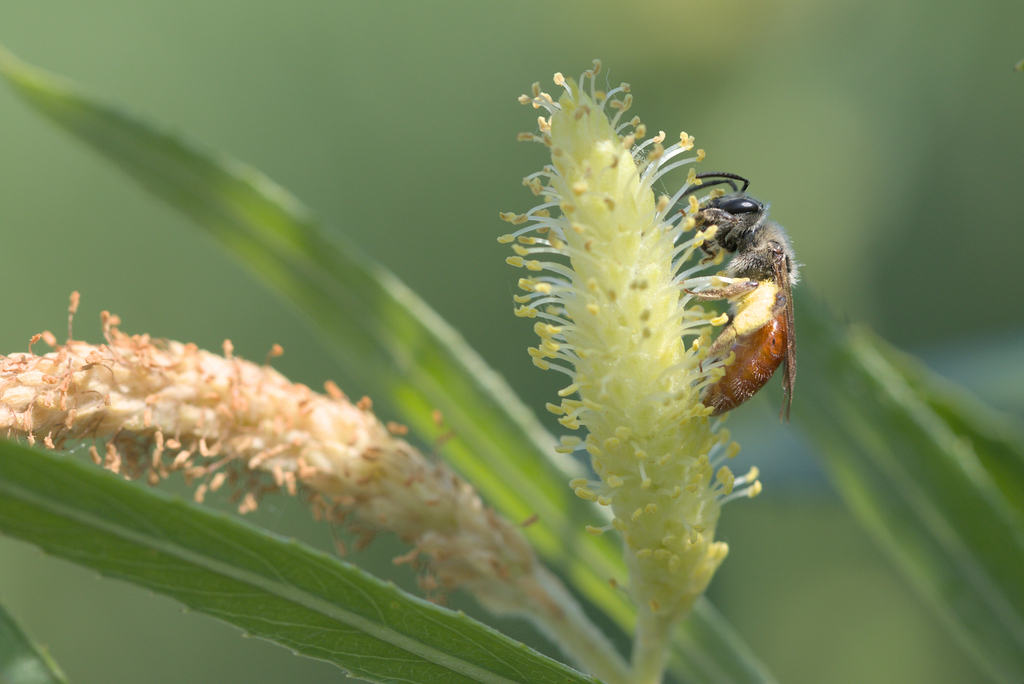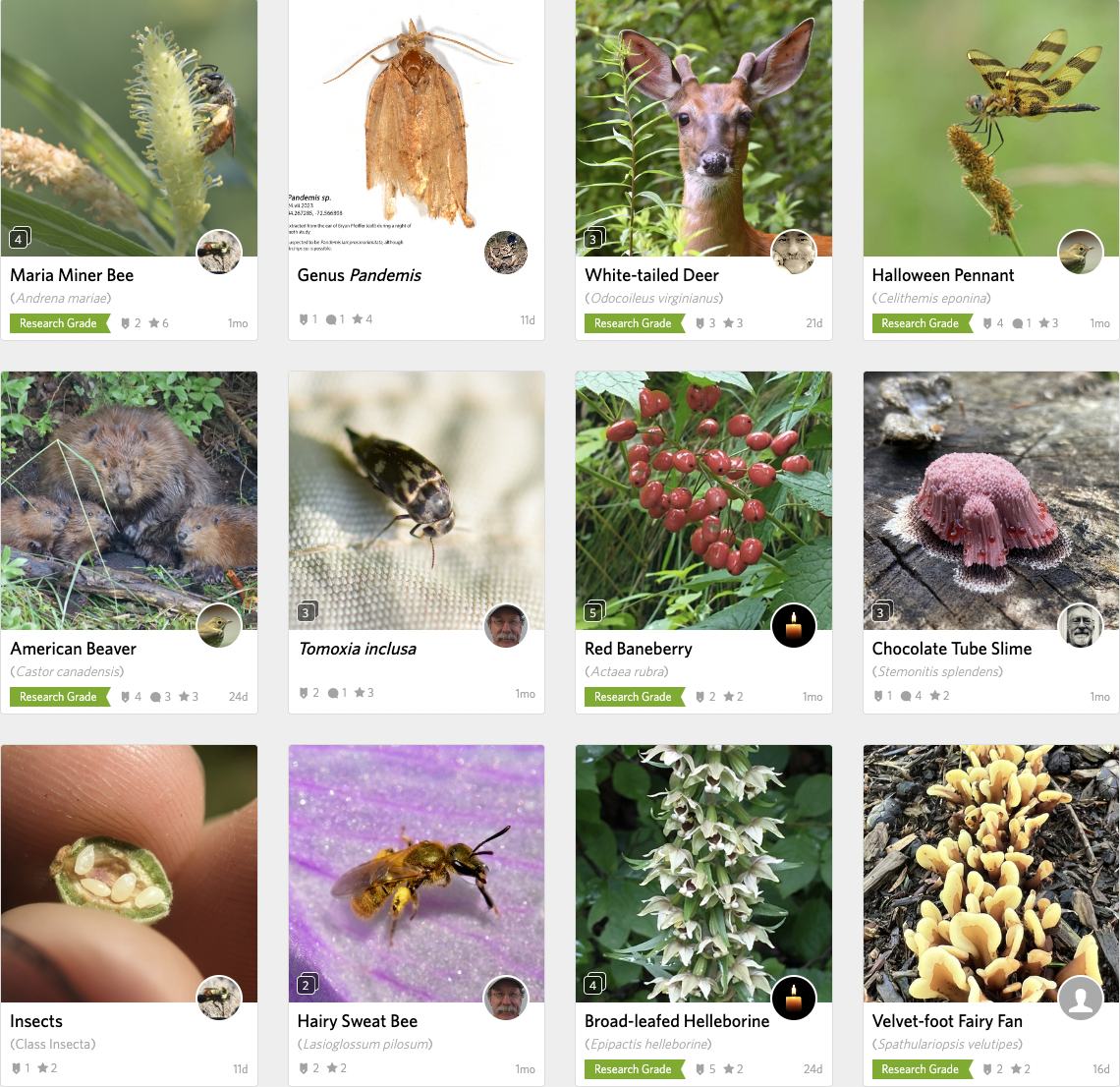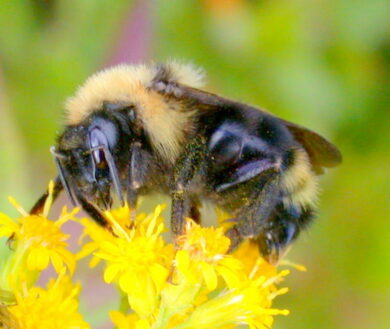July 2023 Photo-observation of the Month

The 2nd Maria Miner Bee ever documented in Vermont visits one of its floral favorites, the blooms of the Interior Sandbar Willow. ©@beeboy
Congratulations to @beeboy for winning the July 2023 Photo-observation of the Month for the Vermont Atlas of Life on iNaturalist! His exciting record of a rare bee species received the most faves of any iNaturalist observation in Vermont during the past month.
Not only does this iNaturalist observation showcase a stunning specialist bee on its favorite pollen-provider, it also marks an exciting second record of this species that has recently been discovered in Vermont. As the coordinator of the Vermont Wild Bee Survey, Spencer has searched the state far and wide for bees just like this individual. Specialist bees, like the Maria Miner Bee, are picky when it comes to which pollen they will provide for their offspring. Some of these pollen-specialists prefer the pollen of plants that are rare or unevenly distributed across the state. If a plant is rare you can expect any species that depend on that plant to be even rarer, which is what brought Spencer to a grove of Interior Sandbar Willow trees on the shores of Lake Champlain. The jury’s still out on whether this species is truly rare or simply overlooked, and iNaturalist records such as this one can help fill in our knowledge of pollinators like the Maria Miner Bee in Vermont. Want to help the Vermont Center for Ecostudies track down rare bees? Check out our Most Wanted list and the list of specialist bees by host plant offered on the Vermont Wild Bee Survey website.

With 34,697 observations submitted by 2,210 observers in July, it was very competitive. Click on the image above to see and explore all of the amazing observations.
Visit the Vermont Atlas of Life on iNaturalist where you can vote for the winner this month by clicking the ‘fave’ star on your favorite photo-observation. Make sure you get outdoors and record the biodiversity around you, then submit your discoveries and you could be a winner!





